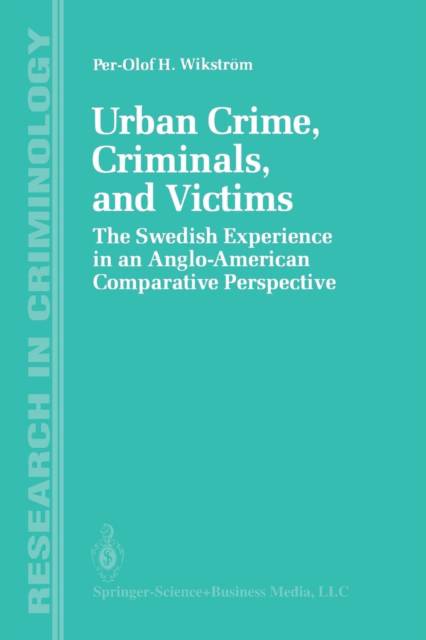
Door een staking bij bpost kan je online bestelling op dit moment iets langer onderweg zijn dan voorzien. Dringend iets nodig? Onze winkels ontvangen jou met open armen!
- Afhalen na 1 uur in een winkel met voorraad
- Gratis thuislevering in België vanaf € 30
- Ruim aanbod met 7 miljoen producten
Door een staking bij bpost kan je online bestelling op dit moment iets langer onderweg zijn dan voorzien. Dringend iets nodig? Onze winkels ontvangen jou met open armen!
- Afhalen na 1 uur in een winkel met voorraad
- Gratis thuislevering in België vanaf € 30
- Ruim aanbod met 7 miljoen producten
Zoeken
Urban Crime, Criminals, and Victims
The Swedish Experience in an Anglo-American Comparative Perspective
Per-Olof H Wikström
€ 83,95
+ 167 punten
Omschrijving
Crime is largely an urban phenomenon, but the specifically urban and area dimen- sions of the social processes that are connected with crime have been seriously understated in much recent criminological work ... Such a claim could not have been made forty years ago. (Baldwin & Bottoms, 1976, p. 1). The above statement by Baldwin and Bottoms about the neglect in crimi- nology of the urban dimension of crime was made in the mid-1970s. However, in the last decade there has been a significant upswing in theory and research on crime in the urban environment. Also, new areas oftheory and research into urban crime have come into focus. (For overviews see Brantingham & Brantingham, 1984; Davidson, 1981.) One very good example of the increasing interest in urban crime is the recent volume of Crime and Justice entitled "Communities and Crime" (Reiss & Tonry, 1986), in which Reiss makes a strong argument for the importance of the study of crime in urban communities and for the linking of the ecological and individual traditions in theory and research on crime. A review of the literature on crime in urban environments shows, not unexpectedly, that Anglo-American research heavily dominates the scene (Wikstrom, 1982; 1987b). Hence, much of the experience we have on urban crime is based on North American and British research and theory.
Specificaties
Betrokkenen
- Auteur(s):
- Uitgeverij:
Inhoud
- Aantal bladzijden:
- 271
- Taal:
- Engels
- Reeks:
Eigenschappen
- Productcode (EAN):
- 9781461390794
- Verschijningsdatum:
- 8/04/2013
- Uitvoering:
- Paperback
- Formaat:
- Trade paperback (VS)
- Afmetingen:
- 156 mm x 234 mm
- Gewicht:
- 399 g

Alleen bij Standaard Boekhandel
+ 167 punten op je klantenkaart van Standaard Boekhandel
Beoordelingen
We publiceren alleen reviews die voldoen aan de voorwaarden voor reviews. Bekijk onze voorwaarden voor reviews.











